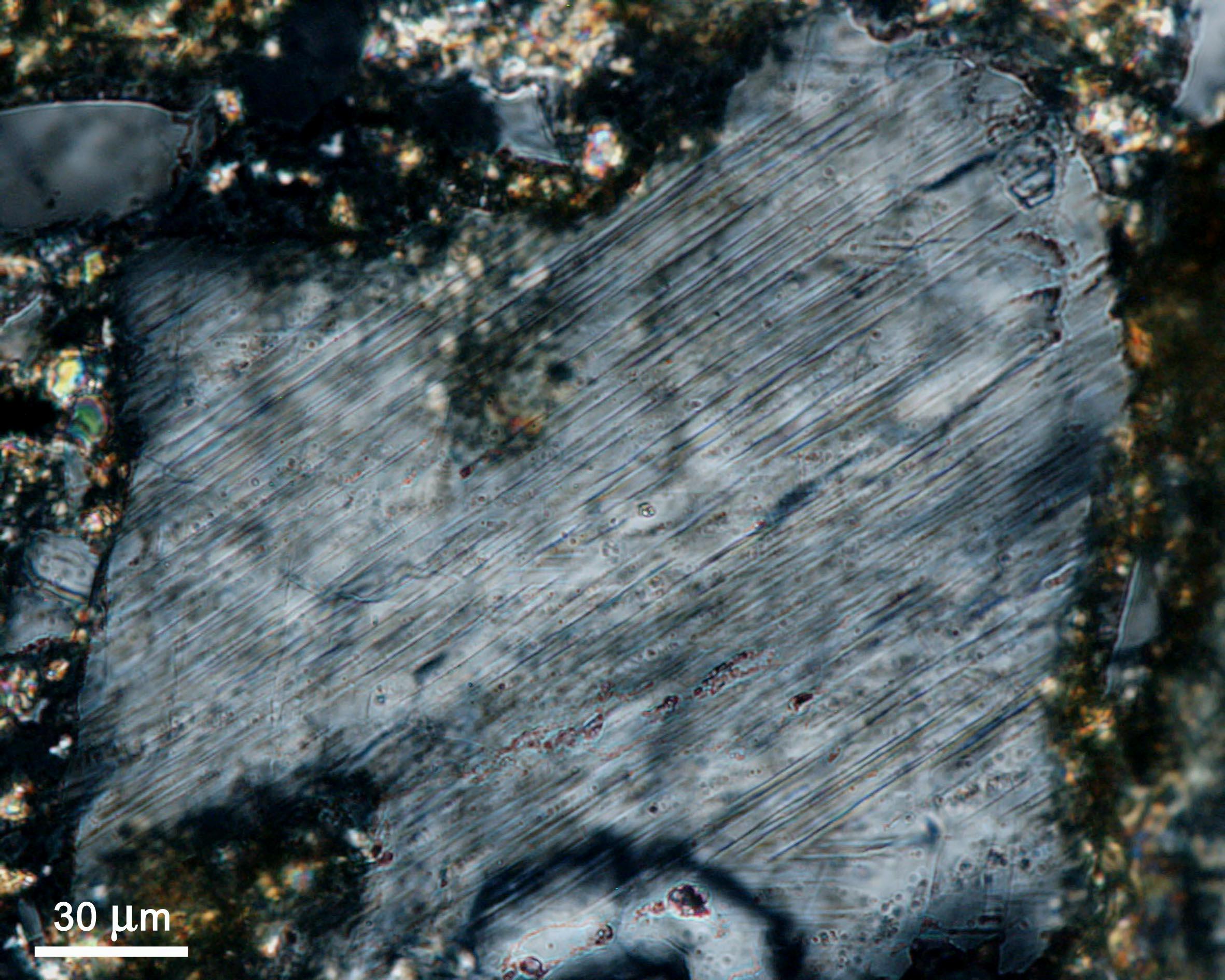CHEN Ming
(The State Key Laboratory of Isotope Geochemistry, Guangzhou Institute of Geochemistry, Chinese Academy of Sciences, Guangzhou 510640, China)

Fig. Quartz fragment in matrix of impact breccia showing two well-developed sets of {10 3} PDFs (cross-polarized light).
3} PDFs (cross-polarized light).
Abstract: The 1.8-km-diameter Xiuyan crater is located in Xiuyan county of Liaoning province. The basement rock of the crater is made up of the Early Proterozoic metamorphic rocks composed of granulite, gneiss, hornblendite, tremolite marble, marble and so on. Quartz from the impact breccia filling in the inner crater shows typical features of shock metamorphism,including the planar deformation features (PDFs) along the crystallographic orientation of quartz on (0001), {10 1},{10
1},{10 2} and {01
2} and {01 3} and so on, as well as the occurrence of silica glass and coesite formed through phase transformation of quartz. The needle-like and granular coesite occurring in silica glass is indicative of crystallization from silica melt. The features of PDFs in quartz indicate a shock pressure up to 35 GPa, whereas the occurrence of silica melt glass has undergone a shock pressure up to 50 GPa. As soon as pressure released and temperature increased, silica melt was firstly formed. As pressure dropped to the regime of 2.5–13 GPa, coesite crystallized from silica melt. The existence of coesite and PDFs in quartz provides diagnostic evidence for shock metamorphism of minerals in Xiuyan Crater.
3} and so on, as well as the occurrence of silica glass and coesite formed through phase transformation of quartz. The needle-like and granular coesite occurring in silica glass is indicative of crystallization from silica melt. The features of PDFs in quartz indicate a shock pressure up to 35 GPa, whereas the occurrence of silica melt glass has undergone a shock pressure up to 50 GPa. As soon as pressure released and temperature increased, silica melt was firstly formed. As pressure dropped to the regime of 2.5–13 GPa, coesite crystallized from silica melt. The existence of coesite and PDFs in quartz provides diagnostic evidence for shock metamorphism of minerals in Xiuyan Crater.
Key words: impact crater; quartz; shock metamorphism; planar deformation features; coesite
E-mail: mchen@gig.ac.cn
ACTA MINERALOGICA SINICA Vol. 31, No. 2, 2011, Page 161-165